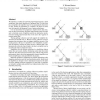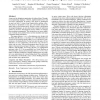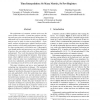86 search results - page 14 / 18 » The Use of Traces for Inlining in Java Programs |
122
click to vote
ACMMSP
2006
ACM
15 years 3 months ago
2006
ACM
We introduce a method for providing lightweight daemons, called simplifiers, that attach themselves to program data. If a data item has a simplifier, the simplifier may be run aut...
PLDI
2010
ACM
15 years 4 months ago
2010
ACM
Arrays are the ubiquitous organization for indexed data. Throughout programming language evolution, implementations have laid out arrays contiguously in memory. This layout is pro...
MICRO
2007
IEEE
15 years 5 months ago
2007
IEEE
The performance of computer systems varies over the course of their execution. A system may perform well during some parts of its execution and poorly during others. To understand...
188
click to vote
PLDI
2009
ACM
16 years 8 days ago
2009
ACM
Languages such as Java and C#, as well as scripting languages like Python, and Ruby, make extensive use of Collection classes. A collection implementation represents a fixed choic...
HPCC
2007
Springer
15 years 5 months ago
2007
Springer
One of the outcomes of DARPA’s HPCS program has been the creation of three new high productivity languages: Chapel, Fortress, and X10. While these languages have introduced impro...



